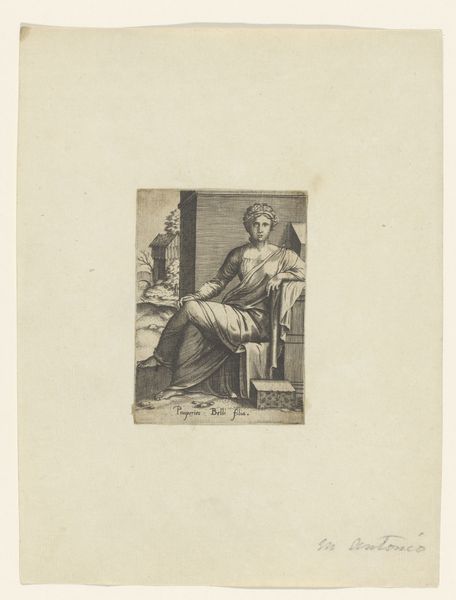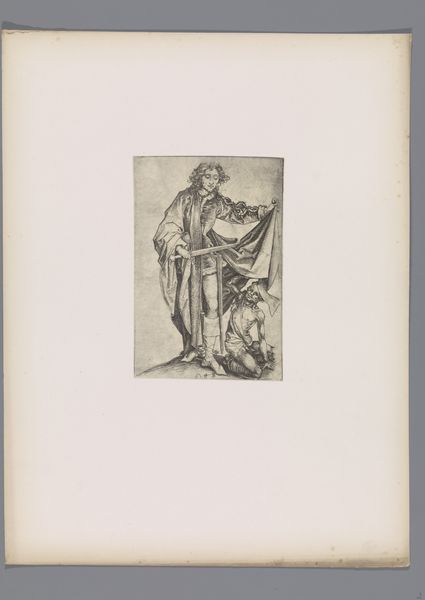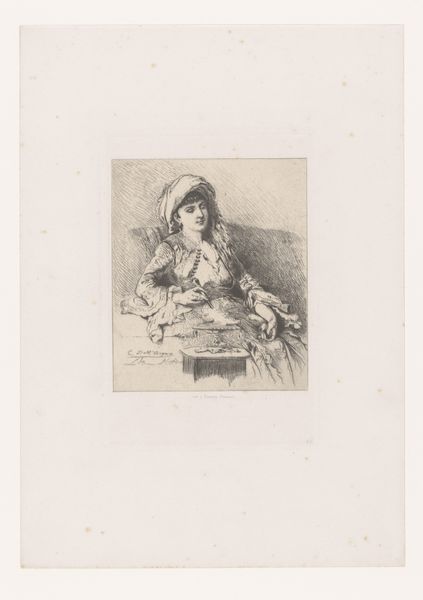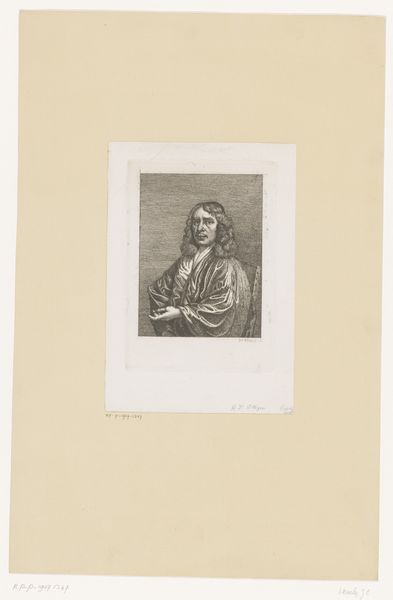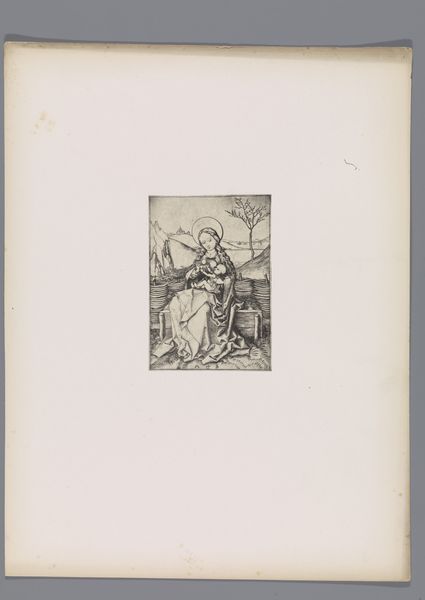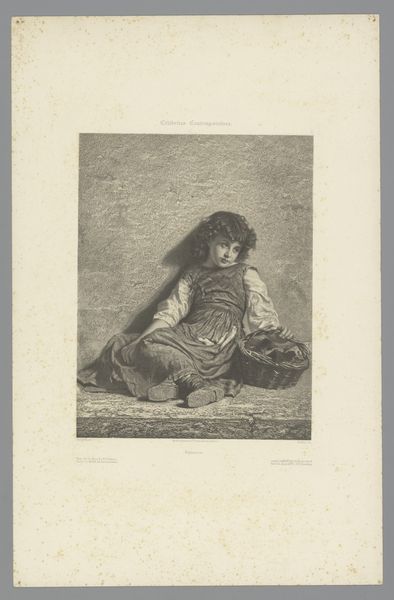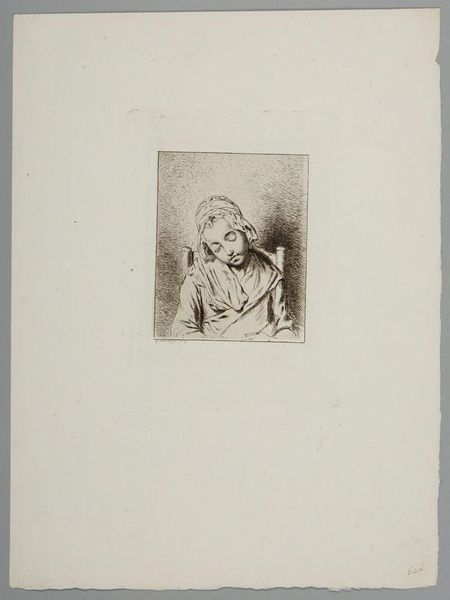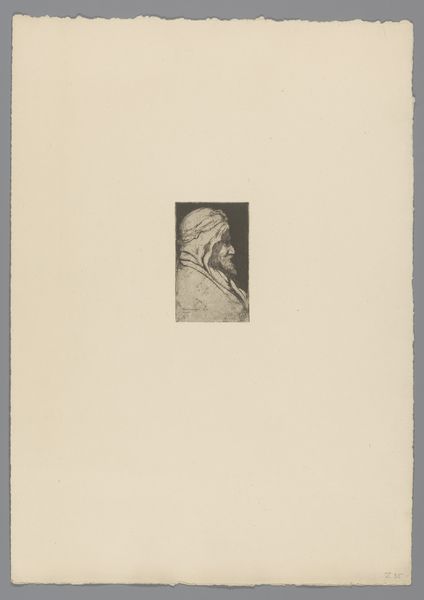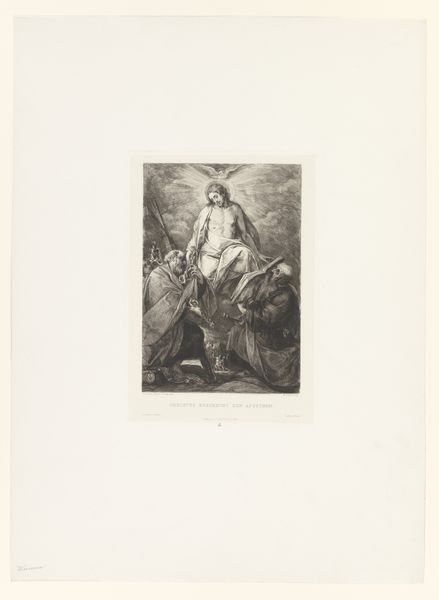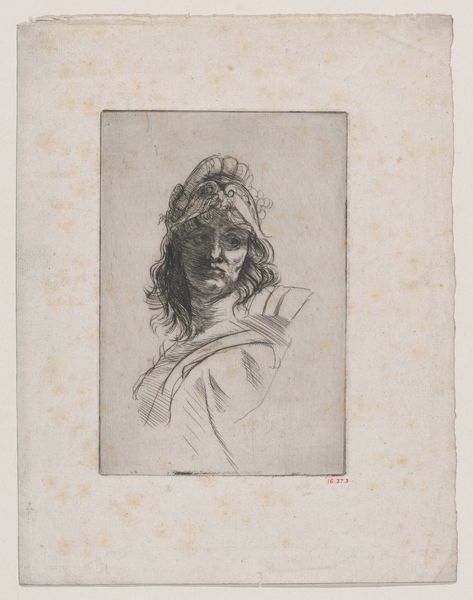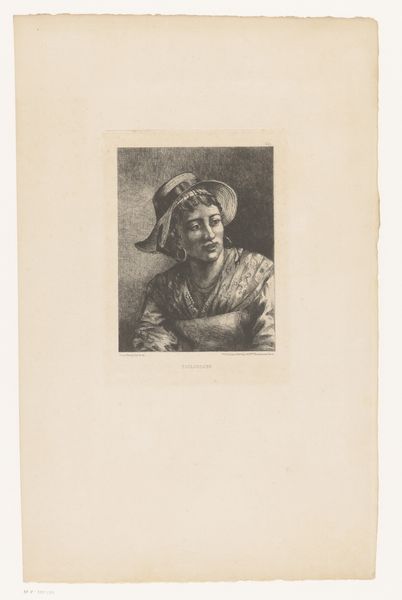
#
aged paper
#
homemade paper
#
paper non-digital material
#
pale palette
#
pale colours
#
light coloured
#
white palette
#
personal journal design
#
folded paper
#
paper medium
Dimensions: height 197 mm, width 152 mm
Copyright: Rijks Museum: Open Domain
Curator: Here we have Jean-Antoine-Valentin Foulquier’s "Portret van Jean Baptiste Poquelin Molière," likely created around 1878 or 1879. It's rendered on paper using what seems to be a drypoint technique. Editor: My immediate response is to its muted elegance. The artist employed a light-colored, almost pale palette that exudes a quiet, contemplative mood. There’s a visual complexity achieved with minimal contrast. Curator: Absolutely, but let’s consider Molière's impact beyond just aesthetics. This work is a powerful example of how portraits of influential figures reinforce prevailing social hierarchies. Here, Foulquier is visually encoding Molière into a lineage of celebrated intellectuals, further cementing his place within the dominant cultural narrative. Think of Molière’s plays and the challenges they posed to social conventions. Editor: I understand the intention behind his plays, but my attention remains focused on the piece’s internal structure. Note the density of the hatching that defines the shadows, juxtaposed against the stark whiteness of the paper. It guides the eye meticulously through the composition. This visual rhythm is central to understanding its effect. Curator: Yet we can’t ignore the significance of Molière as a figure. The performative nature of his identity as a playwright intersects with our understanding of celebrity, challenging conventional notions of authenticity. This portrait serves as both documentation and myth-making. He dared to criticize societal norms in his plays and, considering his art, and its position, Molière himself questioned traditional portrayals, pushing us to reconsider his social standing. Editor: While I respect your interpretation, reducing art to its societal function diminishes its intrinsic aesthetic value. I want to add: see how the subtle textures on the aged paper itself, act as a dynamic element in its composition? Curator: Well, understanding those broader connections allows us to appreciate Foulquier’s portrait as something more than just lines on aged paper, right? Editor: Perhaps a richer connection… Curator: Indeed!
Comments
No comments
Be the first to comment and join the conversation on the ultimate creative platform.
